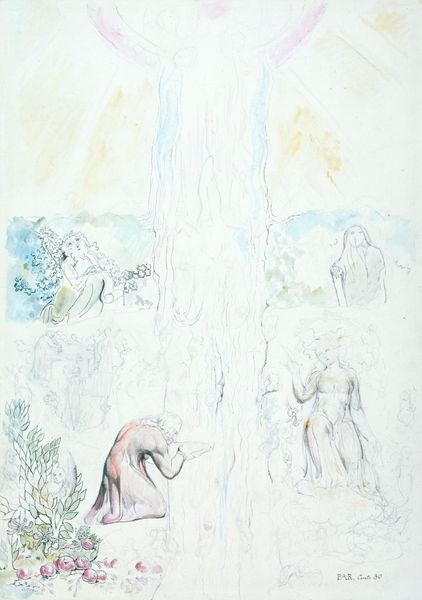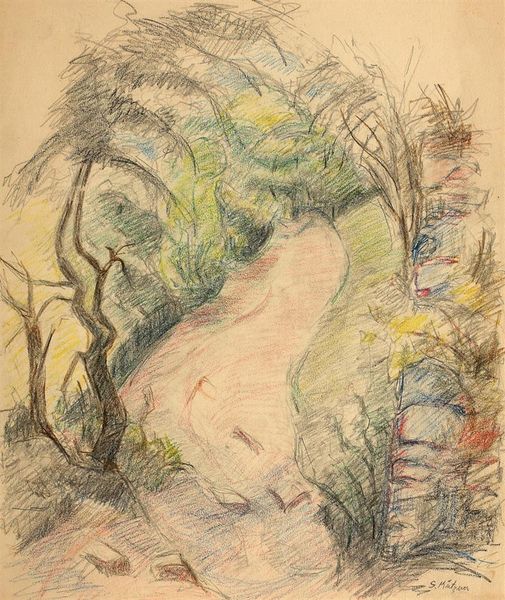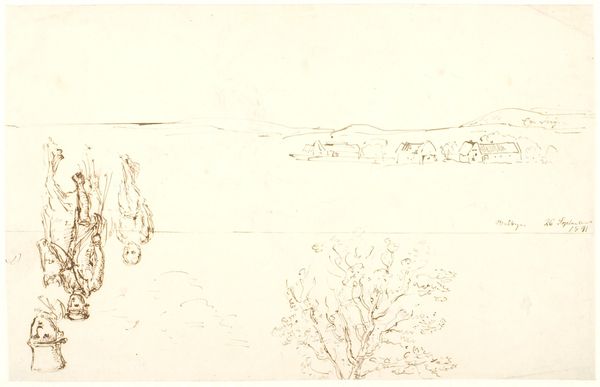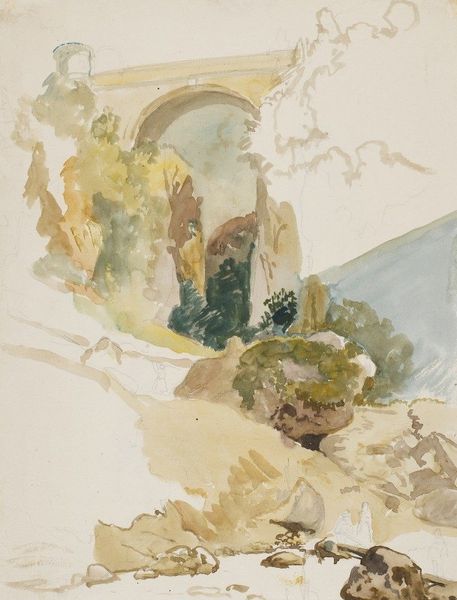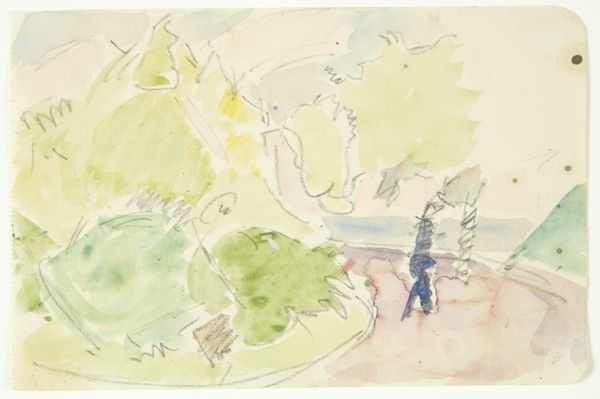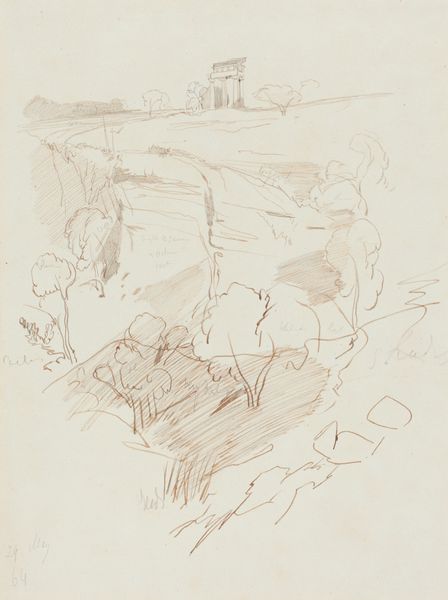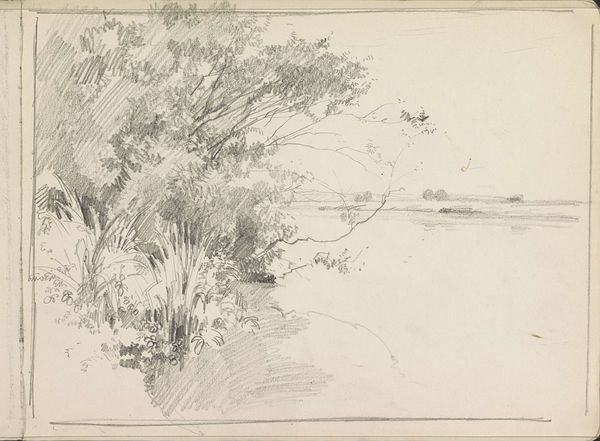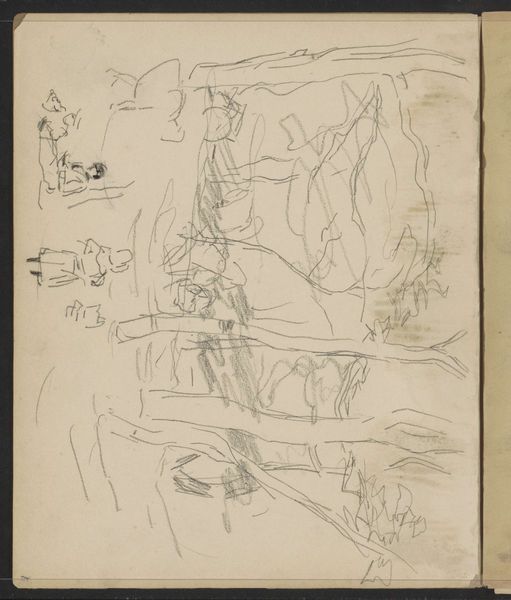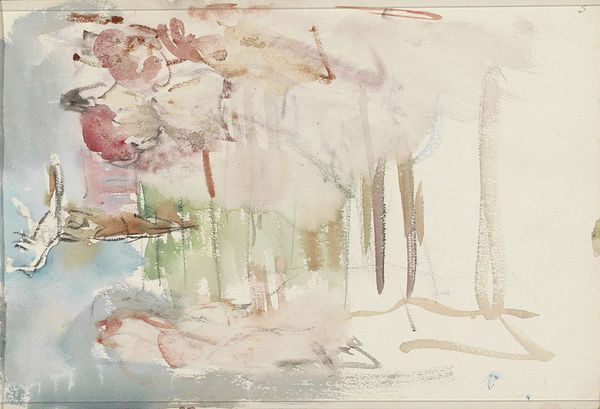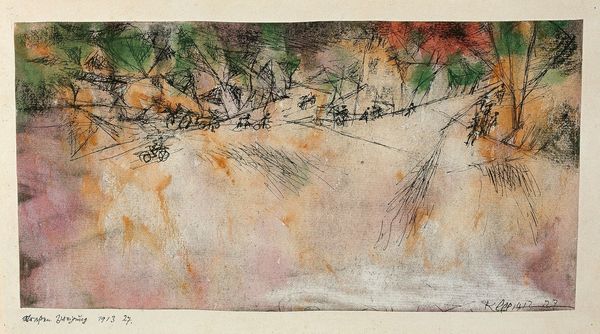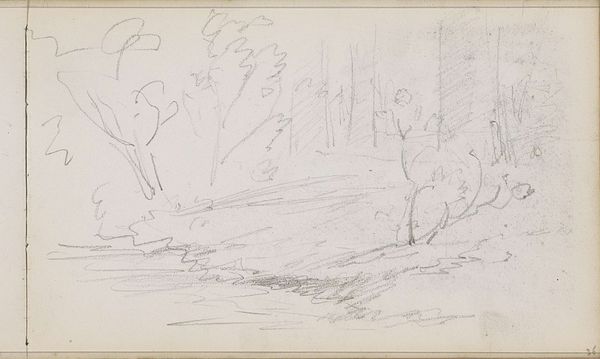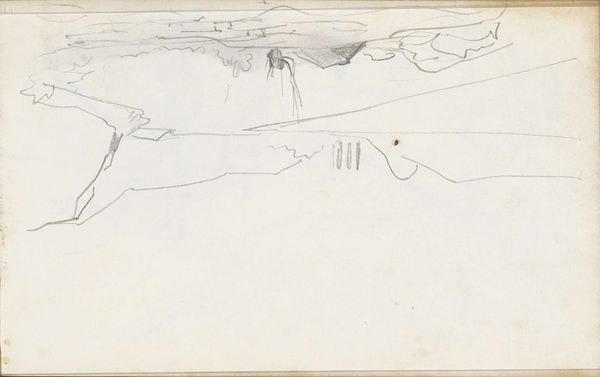
Copyright: Public Domain: Artvee
Editor: This is "Sarvikallio, sketch" by Eero Järnefelt, dating from 1910 to 1912. It’s a pencil and watercolor drawing, and the colors are so delicate. I'm struck by the way the figures seem almost ethereal, barely present in the landscape. How would you interpret this work? Curator: Let’s look at how Järnefelt articulates space. Notice the layering; the foreground is defined by bolder pencil strokes and warmer washes, while the background recedes through diluted color. The skeletal tree to the right acts as a visual frame, pushing our gaze inward. What do you make of the limited palette? Editor: It feels very intentional. The pale blues, greens, and browns create a sense of harmony, almost like a muted memory. Does the restricted palette reinforce the dreamlike quality of the figures? Curator: Precisely. It guides us to read the work not as a straightforward depiction of a place, but as an exercise in pictorial construction. Järnefelt uses these minimalist features to abstract an impression, an experience of the landscape, which is emphasized in his compositional arrangements. Note how the eye traces diagonal movements through the composition. Editor: I see that now! It starts from the lower left corner up to the figures on the rocks, then across to the tree. It's quite subtle, but it really guides the eye. This formal approach gives me a completely different appreciation of what I first saw. Curator: Exactly! This approach illuminates Järnefelt’s intention beyond simple representation, offering us insight into the visual systems at play. What initially seems ethereal is underpinned by carefully chosen, interlocking artistic interventions. Editor: I see it's more calculated than I thought. Thanks; that was enlightening! Curator: Indeed, it is a process of close visual analysis to grasp its intrinsic values.
Comments
No comments
Be the first to comment and join the conversation on the ultimate creative platform.
